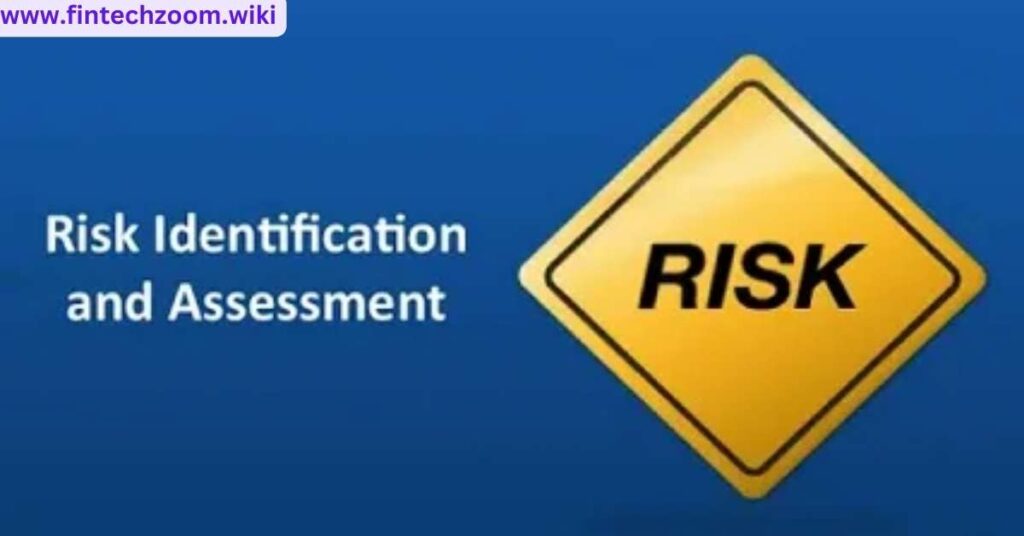FintechZoom BAC Stock covers insights about Bank of America Corporation’s (BAC) performance in the financial market. It provides analysis on key factors like revenue, earnings, interest rates, and economic conditions. The platform helps investors understand BAC stock trends, price targets, and future prospects. It’s a useful tool for making informed investment decisions.
Looking to invest smarter in Bank of America (BAC) stock? FintechZoom breaks down the latest trends, price movements, and market drivers to keep you ahead. Discover expert insights into what shapes BAC’s value and future growth. Start making confident investment choices today!
What Do You Mean By BAC?
BAC stands for Bank of America Corporation, a leading financial institution in the U.S. Founded in 1904, it has grown through major mergers. Today, it offers a wide range of banking and financial services worldwide.
The bank provides a lot of financial services, such as:
- Consumer Banking: Offers checking and savings accounts, personal loans, and user-friendly mobile and online banking services.
- Investment Banking: Provides advisory services for mergers and acquisitions to corporations and governments.
- Wealth Management: Manages financial assets and plans for the future through Merrill Lynch’s investment and wealth services.
- Global Markets: Operates in international markets, focusing on foreign exchange and risk management solutions.
Legacy and History of BAC Stock
The official Fintechzoom BAC stock symbol is “BAC,” and it has a long history that shows the evolution of modern banking in the United States.
Founding and Early Growth
Bank of America started in San Francisco in 1904 as the “Bank of Italy,” founded by Amadeo Giannini. It focused on supporting immigrant communities through lending. In 1930, it rebranded as “Bank of America” and became a major U.S. bank. By the 1950s, it was the world’s largest commercial bank.
Public Listing and Expansion
In 1971, Bank of America went public on the New York Stock Exchange under the ticker “BAC.” This gave it access to capital for rapid growth. Over the years, it expanded nationwide through strategic investments and business developments.
Transformative Acquisitions
A key moment was its 2008 acquisition of Merrill Lynch during the financial crisis. This move strengthened its position in investment banking and wealth management. However, it also brought regulatory challenges and affected stock performance.
Also Read: FintechZoom SP500:Latest Market Insights and Trends
Recent Performance of BAC Stock
Bank of America’s (BAC) stock has experienced fluctuations recently, reflecting market volatility and macroeconomic challenges like inflation and rate hikes. Despite these pressures, the company has maintained a strong balance sheet and steady shareholder returns. Its performance shows resilience amid a shifting financial landscape.
Rising interest rates, influenced by Federal Reserve policies, have boosted BAC’s net interest income and profitability. However, concerns about an economic slowdown have tempered investor confidence, causing occasional price pullbacks. This cautious sentiment highlights the balancing act BAC faces in navigating market conditions.
Key Factors Driving BAC Stock

Several key factors are currently driving the performance of BAC stock:
- Interest Rate Environment: Rising interest rates have increased BAC’s net interest margin, boosting revenue as loan charges grow. This has positively impacted its stock performance recently.
- Economic Conditions: U.S. economic growth supports demand for banking services, aiding BAC’s performance. However, recession concerns could dampen investor confidence.
- Regulatory Environment: Changes in banking regulations, such as capital requirements and stress tests, can affect BAC’s profitability and operations. Investors are closely monitoring these developments.
- Dividend Yield: BAC consistently offers attractive dividends, appealing to income-focused investors. Maintaining or increasing dividends remains vital for shareholder confidence.
Technical Analysis
From a technical viewpoint, BAC stock reflects both bullish and bearish signals, with resistance near key price levels causing brief consolidation. Despite this, the long-term trend remains upward, aided by strong fundamentals and favorable interest rates.
Moving averages suggest support levels, while relative strength indicators show BAC is in a balanced state, neither overbought nor oversold. This indicates the stock may trade within a range short-term, with breakout potential tied to market trends.
Comparative Analysis
Compared to its financial sector peers, BAC has shown robust performance, thanks to its strong capital position and diverse revenue streams. Its risk management strategies have helped it navigate economic challenges effectively, setting it apart in a volatile market.
While some major banks struggle with significant headwinds, BAC’s resilience has provided stability and confidence to investors. This comparative strength underscores its competitive edge in the financial industry.
Predictive Market Trends of Fintechzoom BAC Stock
Here are some Fintechzoom BAC stock forecasts for market trends:
Interest Rate Trajectory
Bank of America’s stock is highly sensitive to Federal Reserve interest rate changes. As the Fed raises rates to combat inflation, BAC benefits from higher net interest revenue, which boosts its stock value. However, unexpected rate cuts or delays in hikes could limit BAC’s growth potential, affecting profitability.
Digital Banking and Fintech Competition
To stay competitive in the digital era, Bank of America has heavily invested in digital transformation. FintechZoom tracks how innovations in digital banking impact BAC as it faces rising competition from fintech companies. The growth of BAC’s digital user base could attract younger investors, boosting its stock appeal.
Economic Resilience and Loan Quality
BAC’s stock stability relies on economic resilience and strong loan performance. Economic factors like unemployment and consumer spending directly affect BAC’s loan quality and default rates. Low default rates and strong loan quality support stock stability, but a downturn or increased loan loss reserves could harm investor confidence.
Focus on Environmental, Social, and Governance
Bank of America is prioritizing sustainability and ESG (Environmental, Social, and Governance) factors to appeal to socially conscious investors. Its focus on carbon neutrality and social impact investments could increase demand for BAC stock, making it more attractive to investors with strong ESG values.
Risk Management Strategies for BAC Stock
Effective risk management is important for firms that want to protect their assets and maintain stability:
Risk Identification and Assessment

The first step in risk management is identifying potential risks, such as market fluctuations or operational disruptions. Businesses evaluate these risks by assessing their probability and potential impact. Tools like risk registers and SWOT analysis help prioritize which risks need immediate attention.
Diversification
Diversification reduces risk by spreading investments or operations across different areas. In finance, diversifying across asset classes and industries limits exposure to downturns in any one sector. Operational diversification, such as sourcing from multiple suppliers or expanding into different regions, also mitigates risk.
Insurance and Hedging
Insurance helps transfer some risks to insurers, protecting businesses from financial losses due to accidents or lawsuits. In finance, hedging strategies, like using derivatives, protect against risks from currency fluctuations or commodity price changes, stabilizing costs and minimizing volatility.
Regulatory Compliance and Audits
Staying updated on legal and industry standards is crucial for avoiding penalties and ensuring operational compliance. Regular internal and external audits help identify areas for improvement, enabling businesses to fix problems quickly and stay compliant with regulations.
Scenario Planning and Stress Testing

Scenario planning involves simulating negative situations to assess their potential impact on operations and finances. Stress testing, often used by banks, helps evaluate their ability to handle economic downturns. This process is key for preparing emergency plans and improving overall resilience.
Implementing Internal Controls
Internal controls are designed to prevent fraud and ensure operational efficiency. By establishing checks and balances, approval workflows, and conducting regular reviews, businesses can maintain integrity and accuracy within their processes.
Regular Training and Communication
Training staff on risk awareness and crisis management strengthens a company’s ability to handle challenges. Clear communication ensures all employees understand their roles in preventing risks and responding to crises, fostering a proactive risk management culture.
Future Outlook
The future of BAC stock largely depends on the U.S. economy and the Federal Reserve’s interest rate policies. If the economy grows and rates rise, BAC is well-positioned to benefit. However, investors should consider potential risks such as economic slowdowns, regulatory changes, and geopolitical uncertainties.
For those looking to invest in BAC, the stock offers a combination of growth potential and steady dividend income. The bank’s strong financial position and adaptability to market changes make it an attractive option for long-term investors seeking stability and returns.
FastBull Insights
In addition to FintechZoom’s analysis, FastBull offers valuable insights into BAC stock, focusing on macroeconomic indicators like GDP growth and unemployment rates. These factors play a significant role in shaping BAC’s future performance, providing a clearer picture for investors.
FastBull’s advanced analytics and real-time data tracking help investors make informed decisions. By using multiple perspectives and tools, investors can strengthen their strategies and potentially improve investment outcomes for BAC stock.
Also Read: FintechZoom Adobe Stock: Stay Updated on Market Movements and Trends
Frequently Asked Question
Is BAC a good stock to buy?
BAC is considered a good stock for long-term growth, but market risks should be evaluated before purchasing.
Who owns the most BAC stock?
Major shareholders of BAC include institutional investors like Vanguard Group, BlackRock, and Berkshire Hathaway.
What is the target price for BAC stock?
Analysts set the target price for BAC stock between $30 and $40, depending on market conditions.
When did BAC stock split?
BAC last performed a 1-for-10 reverse stock split in 2010.
Conclusion
FintechZoom provides valuable insights into Bank of America (BAC) stock, focusing on key factors like interest rates, economic conditions, and regulatory changes that influence its performance. The platform helps investors track real-time data, making it easier to stay informed and make decisions based on current market trends.
BAC stock has shown resilience due to its strong financial position and diverse revenue streams. As the Federal Reserve continues to adjust interest rates, BAC’s profitability can be positively impacted, making it an attractive option for long-term investors. However, potential risks like economic slowdowns and regulatory changes remain important considerations.


